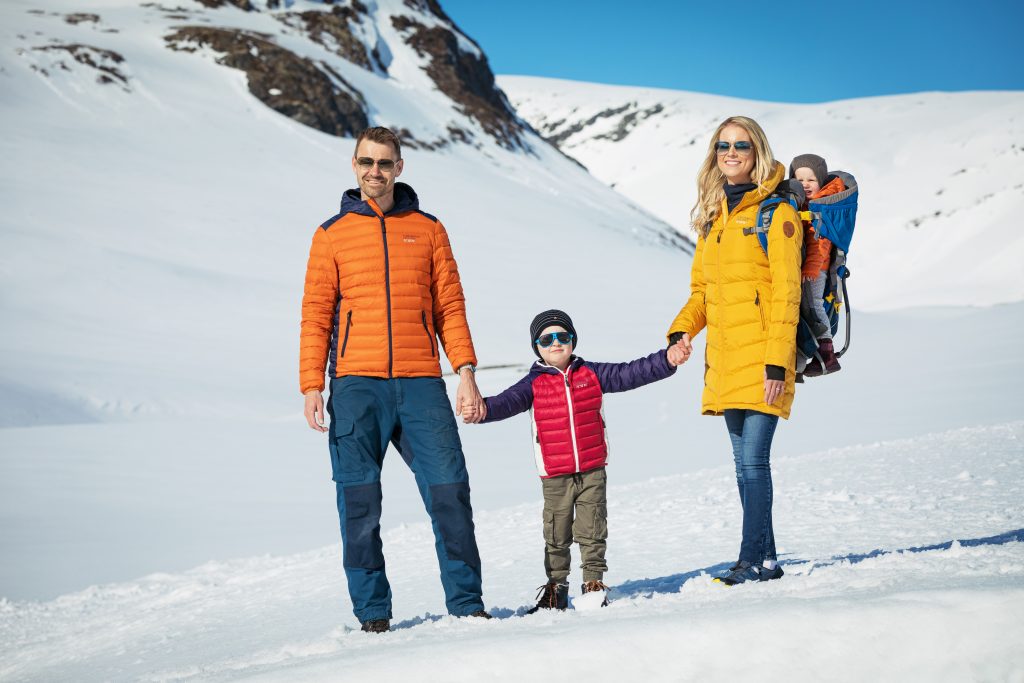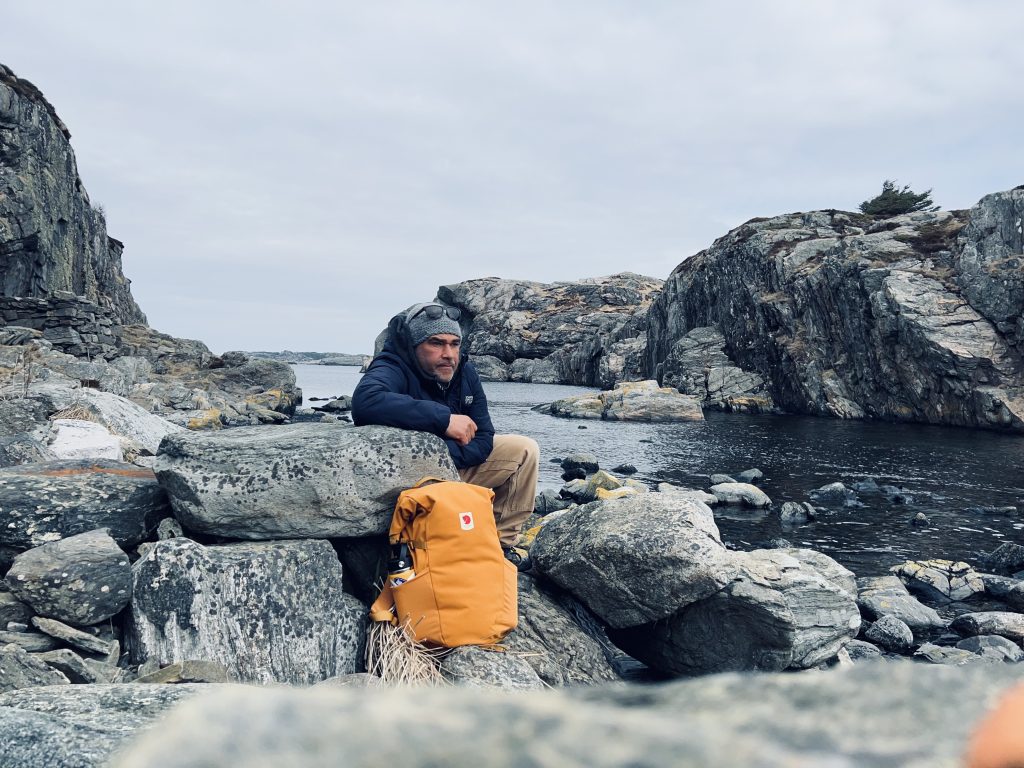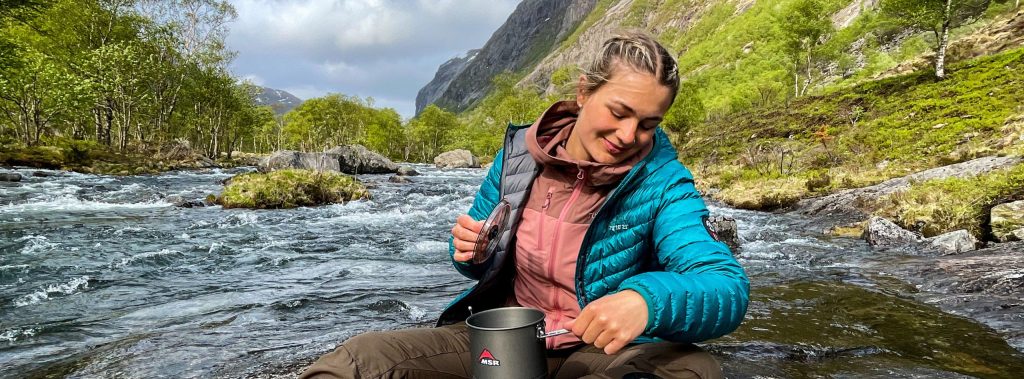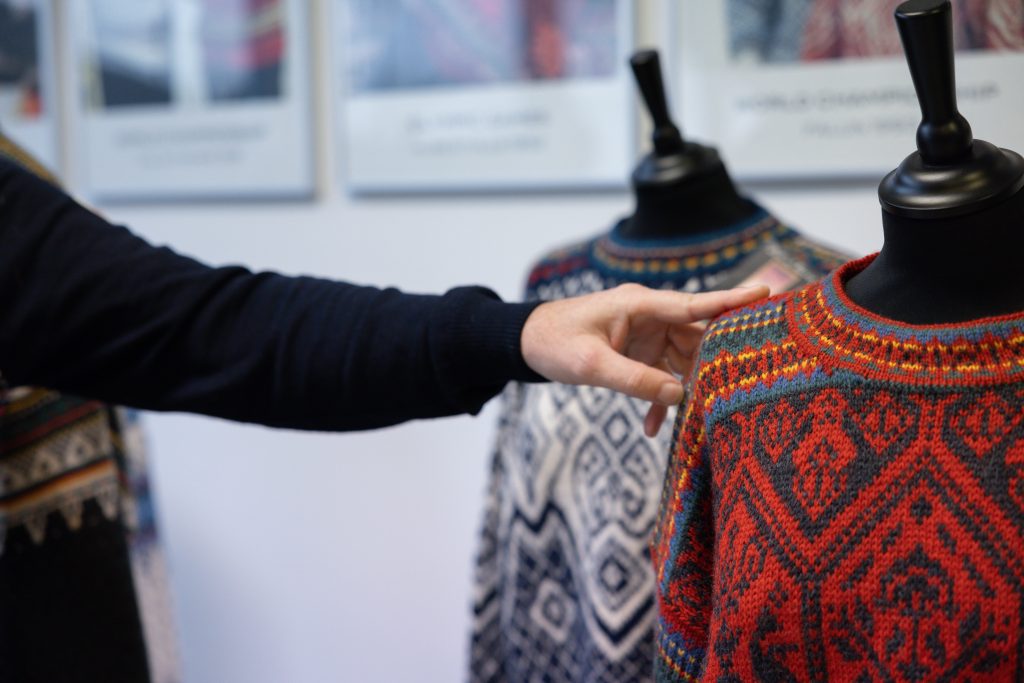Winter clothing is not the same as before when puffer jackets and winter jackets were only used to keep us warm. Nowadays, it has become one of the trendiest garments to wear in the cold winter months. Norwegians love to spend time outdoors and want to look visually appealing at the same time as the garments keep us good and warm. Staying warm is the key to a successful trip outdoors and it is important to dress according to the weather conditions. There are countless outdoor activities to choose from in Norway, and the weather and the activity determine which type of jacket is best suited for the occasion. Will a more expensive down jacket keep you warmer throughout the winter, or can a cheaper synthetic jacket keep you just as comfortable and warm? There are both advantages and disadvantages to down and synthetics, and what separates these two garments is often the insulating materials. This article tells you what to think about before buying a new winter jacket.
Essential garment in the wardrobe
The down jacket is a recurring theme in the fashion scene when the temperature hits minus degrees, and they come in countless colors, lengths, and materials. Nothing is better than wrapping yourself in a warm down jacket on a cool autumn or winter morning, and since the garment is such a trendy piece to wear, it is no wonder that the down jacket reappears year after year in every fashion magazine. A soft down jacket is a must in the autumn and winter wardrobe and will keep you warm and comfortable throughout all the cold months.
Determined by activity and weather forecast
With countless varieties on the market, it is difficult to know which jacket is best. The thickness and material of the jacket you are going to buy is determined by the weather forecast and the activity you are going to undertake. If the weather prediction is cold and dry, down is by far the best choice, but if the forecast is cold and wet, synthetic is a great alternative. Norway is a country where there are major weather changes, and it is important to dress according to the weather conditions. Some questions you should ask yourself before buying a new winter jacket; What do you want to use the jacket for? Will you use the jacket in the city, or on the mountains? Is it important that it is warm, or that it is lightweight and is easily compressible?
What are down jackets?
Down jackets are outer jackets with down feathers often from geese and ducks with very good insulation properties, because the jacket consists of small air pockets. The down creates thousands of tiny air pockets that retain warm air and heat and prevents the cold air from reaching your body. This helps the user of the jacket to stay warm and comfortable in cool temperatures.
Advantages and disadvantages of down
Down is a natural product that is best at keeping you warm, uses less space, and has the lowest weight in relation to how much insulation it provides. The jackets are both light and compressible, which makes it easy to carry. The only downside is that the down loses almost all these properties as soon as it gets wet, and it takes a long time to dry out when it is soaked. This is because the “chambers” in the down collapse when it gets wet, which means that the jacket loses its insulation ability considerably, at the same time it becomes heavy and clammy. If you do not make sure that the down is completely dry before you use it, the jacket may start to smell, and the down will lose its great properties.
What are synthetic jackets?
Synthetic jackets are made with insulation material made of ultra-thin microfibers that form air pockets. It is these air pockets that insulate the body heat on the inside and block cold air on the outside. Synthetic insulation materials that imitate down are often made of polyester which is treated in different ways to get this special property.
Advantages and disadvantages of down synthetic
If the weather forecast predicts precipitation, or if you are heading out in humid environments, the synthetic insulation material is a very good alternative to down. This is because synthetic material can withstand a significantly larger amount of water than down, because the hollow fibers are not folded so easily and there are large amounts of air between the material. Synthetic has better moisture-transporting properties and releases condensation instead of tying it together, as down does. The disadvantage is that they often weigh a lot more than the down jackets and the compression is not as good. The synthetic down jackets are made to have as good properties as the down jackets, but they do not quite reach the same insulation ability in relation to weight as the down jacket.
Environment and animal welfare
There are ongoing debates regarding the choice between down and synthetic materials. Is it ethically okay to stuff the jacket with down? More and more suppliers who use down guarantee that their down is not plucked from living birds, and there are strict guidelines for animal welfare. Mall of Norway collaborates with brands who do not abuse animals, and who use down as a by-product from the food industry. Thus, there is as little damage to the environment as possible. Even when it comes to synthetic materials, the environmental focus is high.
How to wash the jackets?
If you do not want to spend too much time in the laundry room, synthetic is a clear winner, because it does not need special washing or treatment as down does. Synthetics can be washed with a fine wash program and drip-dried fast, which is positive if you are going to use the jacket in high activity where you sweat a lot and must wash it often. The down jackets are not so fond of being washed, and it is wise to try to wipe off dirt and spills with a damp cloth and save the actual washing until it is really necessary. If the jacket needs a wash, wash it carefully with a wool program, and use detergent that is intended for wool, as the enzymes in other detergents can damage the down feathers. After a wash, it is important to gently dry the jacket in the dryer with a couple of tennis balls but use low heat, so it does not burn. The jacket will have a longer durability if you take good care of it. Hang it up for ventilation and only wash the jacket when absolutely necessary.
Conclusion
Rainy weather and moisture are by far the down jacket’s biggest achilles heel, and if you go out in humid weather, synthetic materials will be the best option. On the other hand, the synthetic jacket will not warm as much as a down jacket with high down and elasticity. Down insulates best in relation to its own weight, is easier to pack, and will keep you good and warm in the cold winter months. You must decide for yourself when to use the jacket, for what activity, and in what weather. It is a garment you should have in the wardrobe when the temperature drops to minus and Mall of Norway offers a large selection of both down and snthetic jackets, so you can enjoy the cooler winter months in a warm and comfortable garment.






